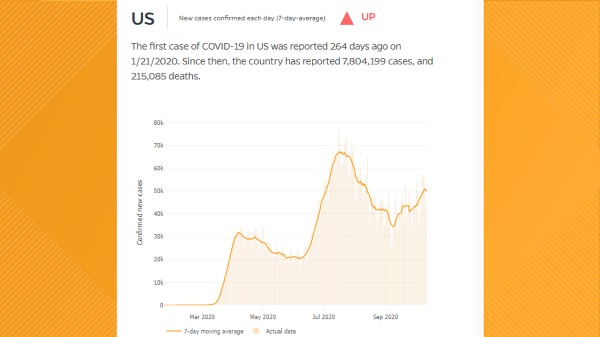Second wave of coronavirus: What is it? Is it here already in the USA and Europe?
People and experts are talking about the second and third waves of coronavirus infection and pandemics. Any rise in cases on a particular day is considered a second wave by many countries and their politicians!
But in countries such as the USA and India that never did see a fall in the number of cases per day, can these rises or surges be considered a second wave?
The second wave of the coronavirus this fall?
Media, politicians, and experts have been warning and writing about the second and third waves of coronavirus. Scientists say that a second wave of the virus will come this fall and winter.
What exactly do they mean by it? As countries are trying to devise ways to cut back on restrictions, they are also trying to see to it that the second wave of the virus does not occur.

The scenario in DMV
DMV or District of Columbia, Maryland, and Virginia also have seen a rise in cases in October compared to September. In Maryland, there has been a 20% rise in the number of hospitalization due to coronavirus.
There is a 22% more coronavirus cases here compared to September 2020. DC also has documented that the cases have increased by a whopping 84%. Since 1 October 2020, the cases in Virginia have gone up by 34%. So what exactly is a second wave?

“There is no scientific definition of a ‘second wave’ nor a specific threshold of cases, rates,”
“It’s about [the] resurgence of cases.”
So, is there a definition or measurement for what qualifies as a second wave? The answer is a simple NO. It is more accurate to refer to most spikes as “peaks”.
The scientific explanation
Dr. Amesh Adalja, Senior Scholar at the Johns Hopkins University Center for Health Security opines:
“One of the things that’s characteristic about a wave is that it has a peak, and it has a trough. When you look at countries like the United States, we really never had a trough. We’re still having tens of thousands of cases every day.”
Dr. Linda Nabha, Infectious Diseases Specialist agrees:
“In order to say one wave is ended, the virus has to be brought under control and cases have to fall substantially. Then for a second wave to start, you need a sustained rise in infections.”

“What we need to think about is the fact that we’re going to have these kind of undulations, this intensification that occurs when there are mass gatherings when people’s behavior changes, and especially when it gets colder, and people can do less activities outdoors,”





